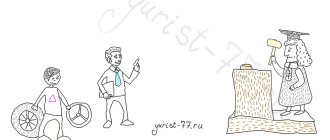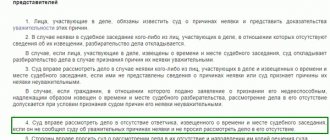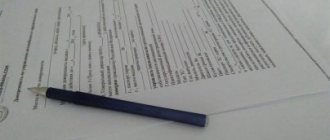Similar goods: consumer rights when exchanging goods
The buyer’s right to exchange non-food products is enshrined in Federal Law No. 2300-1 articles 18 (if defects are identified in the purchased product) and 25 (return/exchange of goods of good quality). The procedure for making the replacement is prescribed in Art. 21 of the same law. Among the opportunities provided to the consumer are the replacement of goods of proper and inadequate quality with:
- product of the same brand (model and/or article);
- similar goods with a corresponding recalculation of the purchase price.
A similar product is understood as a product of a different brand (model, article), which may differ in shape, dimensions, style, color, size or configuration.
Important: an exception is made for goods included in the list of non-exchange/returnable goods (approved by Decree of the Government of the Russian Federation No. 55 of January 19, 1998).
The procedure for exchanging goods according to the law
Non-food products of proper quality can be exchanged within fourteen days, not counting the day of purchase. The product should not bear traces of use; it is necessary to fully preserve its presentation and consumer properties, factory labels and seals.
If the product purchased by the consumer turns out to be of poor quality (defective, with faults), it can be replaced with a similar one during the entire warranty period, if installed, or within a reasonable period (usually 2 years) in the absence of a warranty. In this case, the deadline for submitting claims may be shifted - for example, for seasonal goods.
Important: if a replacement product is not available for sale, the choice of further action belongs exclusively to the consumer.
Special conditions for replacing goods
In the absence of the required product for sale at the time the consumer contacts, the parties can agree on an exchange upon the first arrival of a similar product, which the seller undertakes to inform the consumer about (the right to exchange after such notification is retained for 14 days).
If it takes more than 7 days to replace a durable product of inadequate quality, the seller, at the consumer’s request, is obliged to provide a product with the same basic consumer properties for temporary use within up to 3 days (Article 21).
In remote areas (the Far North and equivalent areas), the requirement to replace the goods must be satisfied within the time required for delivery of the corresponding goods to these areas.
If you need more detailed advice on your specific situation, contact experienced lawyers:
Product quality and consumer protection
tags:
Quality, Products, Consumer, Indicator, Requirement, Protection, Level, Value Product quality is of paramount importance for consumers, since it is quality that determines its consumer value. Product quality management is the achievement of a certain (required) level of production by establishing, ensuring, and maintaining it. Economic methods play a major role in this, covering such systems of production activity as planning, incentives, and pricing.
Quality improvement planning is the subject of establishing reasonable targets for production with certain indicator values that must be achieved by a given moment or for a given period of time. Tasks and measures to improve product quality are developed taking into account the results of an analysis of the quality of products based on:
- the needs of the solvent market for products of a certain quality;
- main directions of industry development;
- forecasts of technical progress;
- requirements of progressive standards.
Product quality requirements are included in the system of state standards of the Russian Federation and include:
- standards of general technical conditions, which contain general requirements for groups of homogeneous products;
- technical specification standards that contain requirements for specific products.
The general technical specifications standard contains the following sections:
- classification, basic parameters and (or) dimensions;
- general technical requirements;
- environmental protection requirements;
- control methods;
- acceptance rules;
- transportation and storage;
- instructions for operation (repair, disposal);
- manufacturer's warranty.
Values of quality indicators can be formed on the basis of:
- calculated (predicted) values;
- values recommended by authoritative organizations;
- the best existing values in world or national practice;
- standards or regulations.
Product quality depends on:
- quality of raw materials and supplies;
- level of development of science and technology;
- progressiveness of the technology used;
- organization of labor and production;
- personnel qualifications.
Indicators characterizing the quality of the product are divided into:
15 pages, 7062 words
Commodity characteristics and examination of tea quality
... The purpose of this course work is to conduct an independent examination of the quality of tea. To achieve this... examination, the characteristics of the product being assessed, the conditions for conducting the examination are established by regulatory documents. When conducting an examination ... of the quality of raw materials and the direction of technological processes in the production of tea, but also for the correct consumption of finished products ...
- quality indicators of the product itself;
- product quality indicators;
- performance indicators of products.
The level of product quality consists of the technical level of the product or the quality of the model. For example, for machinery and equipment, the quality level is determined by: equipment performance; standardization and unification of models, reliability, ease and safety of use, as well as technical novelty and patent purity, durability, service life without repair.
In the “quality” indicator, the highest priority is the complete satisfaction of the needs and interests of potential buyers, which ensures profit. To make a profit, many companies increase costs, and sometimes significantly. These costs are necessary for the formation of high-quality internal and external infrastructure of the company.
The concept of “quality” is multifaceted. It includes the quality of organization, economic calculations, technological equipment and production technology, environmental parameters, socio-psychological relations, ethical standards, legal and political relations. Each quality component contributes to the overall quality of the product.
The level of manufacturing quality characterizes the compliance of the finished product with the requirements of regulatory and technical documentation for its production, based on consumer requirements, including compliance with the technological process, technical conditions, and standards.
The relative characteristic of product quality, based on its comparison with the corresponding set of basic indicators, is called the level of product quality.
The criterion for the optimal level of product quality can be a complex integral indicator that reflects the ratio of the total beneficial effect from the operation (consumption) of a product and the total costs of its creation and operation (consumption).
Control over the quality of manufacturing products is considered as a control system aimed at programming and coordinating the establishment, maintenance and improvement of the quality of products or services at the most economical level of costs necessary to fully satisfy consumer requirements.
The level of product quality in operation (consumption) is characterized by
- defect rate;
- costs of eliminating and reworking defects discovered during technical control;
- expenses for satisfying consumer claims in connection with the identification of defects or shortcomings during the operation or consumption of goods.
In foreign companies, the average level of defects does not exceed 2–3% of the volume of products. For American companies, a defect tolerance of 1% is considered normal. For Japanese firms, this norm is considered excessive.
Assessing product quality involves meeting product quality indicators with consumer requirements and choosing, if necessary, directions for improving its quality.
Quality is determined by the measure of compliance of goods, works, services with the conditions and requirements:
- consumer requests;
- standards;
- contracts;
- contracts.
Quality is a complex concept. On the one hand, all departments of the enterprise are, to a greater or lesser extent, responsible for the quality of compliance of goods with the project, on the other hand, each product has a number of quality indicators that can be measured and controlled. Each of these quality indicators can be subjected to control, and it is necessary to take into account various deviations between the required and actual values of the quantities. The quality of such a product, characterized by several quality indicators, is determined by the weighted sum of the values of individual characteristics.
Quality indicators can be characterized by continuous or discrete values. They can be absolute or relative. The values of the quantities depend on the conditions and methods of their determination. Product quality indicators are established by objective methods, as well as by experts, and are considered in relation to the conditions of creation and operation (consumption) of products. An indicator of product quality that characterizes one of its properties is called single, two or more properties are called complex.
When assessing the level of product quality, both technical and economic data are used. The justification for choosing a range of quality indicators is made taking into account:
- purpose and conditions of use of products;
- analysis of consumer requirements;
- product quality management tasks;
- composition and structure of characterized properties;
- basic requirements for quality indicators (see tables and figures below).
Quality assessment is based on indicators reflecting:
- functional properties;
- fashion;
- style;
- reliability;
- maintainability;
- preservation.
Product quality analysis includes:
- quality characteristics according to established indicators/plans;
- study of the main factors influencing quality;
- calculation of the impact of quality on production volume in monetary terms.
Classification of quality indicators
| Quality indicators | |||
| by characterized properties: | according to the way of expression: | according to quality level assessment: | by stage: |
| single | natural units (kg, sq.m., h, etc.) | basic | projected |
| complex | cost | relative | design |
| production | |||
| operational | |||
Cause-and-effect relationships ensuring product quality
| Project documentation | Organization | Systems technology | Work | |
| Specificity | Potential | Techniques | Forms | |
| Complexity | Specialization | Methods | Discipline | |
| Systematicity | Flexibility | Processes | Motivation | |
| Manufacturability | Controllability | modes | Qualification | |
| Product preparation and production | Resource level | Level of technology and organization | Performer level | Standardized quality of products (services) |
| Norms | Production | Threading | Quantitative | |
| Cycles | engineering | Rhythm | Professional | |
| Standards | Social | Continuity | Qualifying | |
| Cards | Transport | Straightness | Replaceable | |
| Technological documentation | Infrastructure | Organizational systems | Composition of labor |
Product quality analysis
| Contents of product quality analysis | |
| By quality category | |
| Quality characteristics according to established indicators (plans, dynamics) | By grade |
| According to product compliance with established standards and technical specifications | |
| According to the share of high quality products in the total volume | |
| According to specific quality indicators for individual industries and industries | |
| Study of the main factors influencing quality | Compliance of the design (style, model) of products with market requirements |
| Level of qualifications of workers involved in organizing and manufacturing products | |
| Quality of raw materials and materials | |
| Material and moral incentives, organization of product quality control | |
| Specific conditions of individual industries and organizational structures | |
| Calculation of the impact of quality level on production volume in monetary terms | Based on quality parameters |
| Based on the growth of the quality level in dynamics | |
| Based on a score of product quality on the market |
Protection of consumer rights is carried out on the basis of the Federal Law of February 7, 1992 No. 2300-1 “On the Protection of Consumer Rights”.
This law regulates the relations that arise between consumers and manufacturers, performers, sellers when selling goods (performing work, providing services), establishes the rights of consumers to purchase goods (work, services) of proper quality and safe for the life, health, property of consumers and the environment , obtaining information about goods (works, services) and their manufacturers (performers, sellers), education, state and public protection of their interests, and also determines the mechanism for the implementation of these rights.
Chapter 2 of the Federal Law “On the Protection of Consumer Rights” provides information on the protection of rights when selling goods to consumers. This chapter includes the following articles:
- Art. 18 “Consequences of selling goods of inadequate quality”;
- Art. 19 “Terms for submitting claims by the consumer regarding product defects”;
Examples of similar educational works
Studying pricing strategies at various stages of the product life cycle on...
Commodity characteristics of the assortment and examination of cosmetic care products...
… goods. The subject of the course work is the product characteristics of the assortment and the examination of cosmetic hair care products. The purpose of this course work is to examine the quality of cosmetic products on ... topics due to the fact ...
Expertise of the assortment and quality of coffee, features of the formation of its market in the region...
... soluble powder; instant coffee drinks, pasty; decaffeinated coffee; coffee and coffee drinks with milk. The purpose of the thesis was to examine the range and quality of coffee, the peculiarities of the formation of its market in the store...
Commodity characteristics, examination of honey quality and organizational and economic...
... assortment of honey, assessing the quality of honey and its compliance with the requirements of regulatory documents. Objectives of the thesis: to study the consumer properties and technology of honey production; reveal the classification of honey varieties; analyze...
Expertise of perfumery products
...samples; — based on the research work carried out, draw a conclusion and give recommendations to the trading company on improving the quality of perfumery products and increasing sales volumes. 1. CUSTOMS EXAMINATION OF PERFUMERY GOODS 1 Market...
Market analysis, range and quality of butter
... butter[8]. The assortment of butter with flavoring components is presented in table 2. Table 2 Assortment of butter with flavoring components. Type of butter Mass fraction of fat, % Chocolate butter 62.0%. Honey oil...










